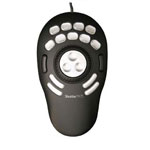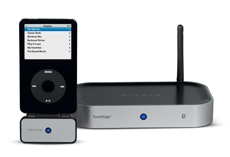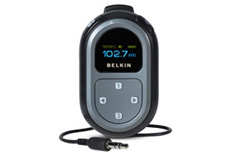Google Mac Blog
Written by: MacCast
Categories: News
by Chris Christensen
 Google wants to know that they love you. Well… that’s not quite true, they want you to know that they love your Mac. Google has started an Official Google Mac Blog to reach out to Mac zealots users like us. The first post to this blog tells Mac Users:
Google wants to know that they love you. Well… that’s not quite true, they want you to know that they love your Mac. Google has started an Official Google Mac Blog to reach out to Mac zealots users like us. The first post to this blog tells Mac Users:
If you sit down at your Mac, start up your browser, and search for “Google mission statement”, this is what you’ll see:
“Google’s mission is to organize the world’s information and make it universally accessible and useful.”
We’re pretty serious about that mission, including the “universally accessible” part. It means making products that everyone can use – including Mac users. We want to provide great products and services to the tens of millions of Mac users around the world, because it’s the right thing to do, and because Mac users inside and outside Google demand it. That’s why we’ve recruited some of the best, most passionate Mac people out there for a Mac Engineering team.
Google is also provding a page to download all of the fruit of their labors so far at Google Software Downloads for the Mac.
Note from editor: If you have not seen it yet and are at all into 3D modeling and stuff, be sure to checkout the FREE Google SketchUp application.
Stuff, Guts, and Video 002
Written by: MacCast
Categories: Mac Pro
by James Alguire
 Quickly scrubbing through video clips to locate the precise portion of a clip to use in a project is a common event for video editors. Final Cut Pro offers several methods to scrub through video and there are useful USB devices that can aid in quickly locating that special scene.
Quickly scrubbing through video clips to locate the precise portion of a clip to use in a project is a common event for video editors. Final Cut Pro offers several methods to scrub through video and there are useful USB devices that can aid in quickly locating that special scene.
The onscreen jog wheel and shuttle controls in the Canvas and Viewer windows are adequate, but the J-K-L keyboard commands are more efficient. J is backward playback, L is forward playback, and K stops playback. The more times the J or L keys are tapped the faster the video plays back. If the L key is tapped a few times to speed up forward playback, tapping the J key will slow down playback. The reverse is also true. If the J key is tapped to speed up reverse playback, tapping the L key will slow reverse playback down. Holding the K key down and then holding the L or J key down provides slow motion forward or reverse playback.
USB controllers, like the Contour ShuttlePRO V.2 ($110) or Contour ShuttleXpress ($60), from Contour Designs (http://www.contourdesign.com ), provide jog and shuttle controls (along with several user programmable buttons that can be configured for other Final Cut Pro functions) to help scrub through video in Final Cut Pro, but having a mouse with a scroll wheel will save you some cash. Simply move the cursor in Final Cut Pro over the Viewer or Canvas and roll the mouse’s scroll wheel up and down to scrub through the loaded video clips (if in the Viewer) or sequences (if in the Canvas). Even better is Apple’s new mighty mouse with it’s mini-trackball Scroll up and down to scrub through video in the Viewer and Canvas, and left and right to quickly scrub through the timeline on long projects.
Stay tuned!
Seeing as this is my first article for MacCast.com I thought I would take this opportunity to introduce myself. My name is John and I’m an 18 year old Photographer and Journalist from South Jersey. I’ve grown up using both PCs and Macs, yet always used a PC as my main machine. I have been using, taking apart, breaking, and fixing computers since the Windows 3.1 days, but over the next few months I plan on making a full transition to the Apple hardware.
I have always loved Macs but because of certain software that is only available on Windows, gaming, and cost I have always used PCs at home. With Apple’s recent transition to the x86 platform and offering users the ability to run Windows, those reasons are no longer holding myself and others back from making the switch. Not to mention the major improvements going from OS 9 (what I used) to OS X being a very attractive aspect of the switch.
Continue Reading »
by Dave Cryer
 Will the Archos tempt me away from my beloved iPod? I must admit, to say it was interesting is an understatement, with some very nice experiences along the way. On test was the 160Gb version of the Archos 504, yes, you read that right, 160Gb of storage.
Will the Archos tempt me away from my beloved iPod? I must admit, to say it was interesting is an understatement, with some very nice experiences along the way. On test was the 160Gb version of the Archos 504, yes, you read that right, 160Gb of storage.
The unit sports a 4.3 inch widescreen, capable of displaying 16 million colours. The screen is nice and bright, evenly lit and offers adjustable brightness levels. My only minor complaint was that there were not enough levels to choose from. Staying with the screen, it is very glossy, so you do get some reflections, but adjusting the angle is not a problem. The size of the actual unit is a little bulky feeling, not as pocketable as a 5th generation iPod, mainly because the size that the hard drive adds to the unit, but also due to the weight. Build quality was spot on, with a very nice brushed metal finish.
Continue Reading »
by Scott McGrath
iSlayer‘s donation-supported “iStat” is a bit like Mr. Scott’s console on the Starship Enterprise: it shows at a glance where you have–and don’t have–the power. iStat can be run as both a widget and as a standalone applet, and provides robust reporting on CPU, memory, disk, network and wireless bandwidth, OS/X uptime, and battery life. It sports an attractive console presentation—indeed the elegant design of the widgets is really the important feature here–and each application can be customized to suit your specific tastes in obsessive-compulsive system monitoring.

iSlayer has just issued a minor update to the iStat applets, but has also introduced new dashboard-style gauges for each individual statistical category (they call them “mini-widgetsâ€) for those who wish to drop a quick speedometer-like gauge on their desktop. Each widget can look like a speedometer or be tamed to look more like a breakout of the overall iStat text-on-an-attractive-box look and feel. You can mix and match with the mini widgets to find a suitable layout and choose only the stats that you find meaningful.
Continue Reading »
by Dave Cryer
 Having an iPod is something I have been lucky enough to be party to from the second generation release onwards, so I have enjoyed the simplicity in design, the superb interface, the usefulness and the power for many years. I use my iPod every day for music and podcasts mainly, but the odd video crops up every now and again.
Having an iPod is something I have been lucky enough to be party to from the second generation release onwards, so I have enjoyed the simplicity in design, the superb interface, the usefulness and the power for many years. I use my iPod every day for music and podcasts mainly, but the odd video crops up every now and again.
About a year ago I invested in two separate speaker systems for my iPod in quick succession, the first I will not name, the second by Logitech was good and I still have it now. So it was with much excitement that I had the opportunity to review the ‘i-deck compact’, not only because it promised to be a step up from what I had been used to, but also because it is manufactured by Monitor Audio, who just happen to also make the home cinema speakers that I have now enjoyed in my lounge for the last two years.
Continue Reading »
by Cynthia Young
 The My Dream App semi-finals have begun. Nine finalists remain in the competition. Users are asked to vote for their favorite idea. In this round of voting, three competitors will be eliminated. Those eliminated will receive Mac Mini computers.
The My Dream App semi-finals have begun. Nine finalists remain in the competition. Users are asked to vote for their favorite idea. In this round of voting, three competitors will be eliminated. Those eliminated will receive Mac Mini computers.
Voting has already started and will end on Saturday, October 14 at 11:59 p.m. EDT. My Dream App has been giving free software to voters in the past three weeks. In this round, all voters will receive Voice Candy, a voice recorder for OS X.
Several guest judges are on the panel to assist with the voting: Kevin Rose co-founder of Digg.com, David Pogue the New York Times tech columnist, and Leo Laporte from This Week in Tech.
My Dream App launched a month ago and has received over 2,700 ideas.
My Dream App was created by Phill Ryu. If you want more information on the contest visit My Dream App.
by Cynthis Young
 Belkin announced the TuneStage II on Wednesday. TuneStage II allows you to play your iPod wirelessly through your home stereo using Bluetooth. In order to use TuneStage 2, you would connect the transmitter to your iPod and wire the receiver to your stereo. You can use your iPod to control the music playing through your stereo from over 30 feet away. If you own the iPod Nano 1G/2G (aluminum) or iPod 5G, you will also be able to remotely control the volume.
Belkin announced the TuneStage II on Wednesday. TuneStage II allows you to play your iPod wirelessly through your home stereo using Bluetooth. In order to use TuneStage 2, you would connect the transmitter to your iPod and wire the receiver to your stereo. You can use your iPod to control the music playing through your stereo from over 30 feet away. If you own the iPod Nano 1G/2G (aluminum) or iPod 5G, you will also be able to remotely control the volume.
Available separately, is the TuneStage II Transmitter. With the TuneStage II Transmitter, your iPod can be connected to stereo headphones and car stereos that come with stereo Bluetooth technology.
TuneStage II is compatible with the following iPod models: iPod nano 1G/2G, iPod mini, and the 4G/5G iPod.
You can purchase TuneStage II starting in late November for USD$149.99.
by Cynthia Young
 On October 11th, Belkin announced a universal FM transmitter that can be used with MP3s, portable DVD players and other devices using the 3.5mm headphone jacks. TuneCast 3 is reported to be an improved version of TuneCast II, offering greater ease of use and a status indicator.
On October 11th, Belkin announced a universal FM transmitter that can be used with MP3s, portable DVD players and other devices using the 3.5mm headphone jacks. TuneCast 3 is reported to be an improved version of TuneCast II, offering greater ease of use and a status indicator.
You can use TuneCast 3 to listen to music and movies through your FM stereo. With a battery life of 20 hours it is great for long drives. If you don’t want to use the battery, a power code is also included.
You can purchase TuneCast 3 in North America beginning in November. Sales in other regions will follow. If your car doesn’t come factory equipped to connect your iPod or you use a portable DVD player, TuneCast 3 is a great solution at an affordable price, just USD$49.99.
by Alex Curtis
 I’ve had a number of friends recently switch to Mac. They may have known how to use their Windows PCs well enough, but they weren’t what some may call “power users.” Having switched to the Mac, they’re finding themselves actually enjoying the use of their new computer, and wanting to know more. One of the first things I show them is some simple tips for browsing the web with Mac OS X’s built-in browser, Safari.
I’ve had a number of friends recently switch to Mac. They may have known how to use their Windows PCs well enough, but they weren’t what some may call “power users.” Having switched to the Mac, they’re finding themselves actually enjoying the use of their new computer, and wanting to know more. One of the first things I show them is some simple tips for browsing the web with Mac OS X’s built-in browser, Safari.
In our last Back to Basics, we explored how adding contacts to Address Book can add additional functionality to Safari.
This time, let’s look at some more basic features of the modern browsers that can dramatically improve your every day browsing.
Continue Reading »
 Google wants to know that they love you. Well… that’s not quite true, they want you to know that they love your Mac. Google has started an Official Google Mac Blog to reach out to Mac zealots users like us. The first post to this blog tells Mac Users:
Google wants to know that they love you. Well… that’s not quite true, they want you to know that they love your Mac. Google has started an Official Google Mac Blog to reach out to Mac zealots users like us. The first post to this blog tells Mac Users:



 Will the Archos tempt me away from my beloved iPod? I must admit, to say it was interesting is an understatement, with some very nice experiences along the way. On test was the 160Gb version of the Archos 504, yes, you read that right, 160Gb of storage.
Will the Archos tempt me away from my beloved iPod? I must admit, to say it was interesting is an understatement, with some very nice experiences along the way. On test was the 160Gb version of the Archos 504, yes, you read that right, 160Gb of storage.
 Having an iPod is something I have been lucky enough to be party to from the second generation release onwards, so I have enjoyed the simplicity in design, the superb interface, the usefulness and the power for many years. I use my iPod every day for music and podcasts mainly, but the odd video crops up every now and again.
Having an iPod is something I have been lucky enough to be party to from the second generation release onwards, so I have enjoyed the simplicity in design, the superb interface, the usefulness and the power for many years. I use my iPod every day for music and podcasts mainly, but the odd video crops up every now and again.
 Belkin announced the TuneStage II on Wednesday. TuneStage II allows you to play your iPod wirelessly through your home stereo using Bluetooth. In order to use TuneStage 2, you would connect the transmitter to your iPod and wire the receiver to your stereo. You can use your iPod to control the music playing through your stereo from over 30 feet away. If you own the iPod Nano 1G/2G (aluminum) or iPod 5G, you will also be able to remotely control the volume.
Belkin announced the TuneStage II on Wednesday. TuneStage II allows you to play your iPod wirelessly through your home stereo using Bluetooth. In order to use TuneStage 2, you would connect the transmitter to your iPod and wire the receiver to your stereo. You can use your iPod to control the music playing through your stereo from over 30 feet away. If you own the iPod Nano 1G/2G (aluminum) or iPod 5G, you will also be able to remotely control the volume. On October 11th, Belkin announced a universal FM transmitter that can be used with MP3s, portable DVD players and other devices using the 3.5mm headphone jacks. TuneCast 3 is reported to be an improved version of TuneCast II, offering greater ease of use and a status indicator.
On October 11th, Belkin announced a universal FM transmitter that can be used with MP3s, portable DVD players and other devices using the 3.5mm headphone jacks. TuneCast 3 is reported to be an improved version of TuneCast II, offering greater ease of use and a status indicator. 
